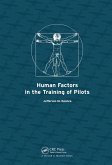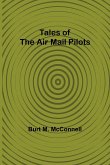From 1989 to 1995, a small group of individuals with unique skill sets came together to support air-to-air/air-to-ground weapons testing over the White Sands Missile Range (WSMR) in New Mexico. Unwilling to maintain the status quo, they came up with innovative solutions to support test missions and became the best at what they did. One of the squadron's pilots used to say, "We do it, because we can, and we did, because it was fun." What an adventure to fly and do what others could only speculate about. With little notoriety, we helped advance stealth, global positioning systems (GPS), and missile technologies, while developing our own capabilities that no one thought possible. Instead of saying "why," we said "why not," and never settled for ordinary, but extraordinary. In time, our reputation grew as an organization that could always deliver. It was not rare for a project to come in and say, "Your reputation has preceded you, so don't screw up." They only wanted the same support they heard other groups had received before. This book is a pictorial history of that journey, by the actual people who participated, and preserved for you to appreciate and enjoy.
Hinweis: Dieser Artikel kann nur an eine deutsche Lieferadresse ausgeliefert werden.
Hinweis: Dieser Artikel kann nur an eine deutsche Lieferadresse ausgeliefert werden.








